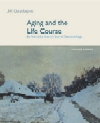1. The Administration on Aging (http://www.aoa.dhhs.gov/)
provides statistical information on older persons, including their life expectancy
and self-reported health status. Go to the website and link to Statistics about
Older Persons, then to "Older Americans 2000: Key Indicators of Well-Being."
Under Key Indicators, link to Health Status and read about life expectancy and
self-rated health status. - In your own words, explain the concept of life expectancy.
- What is the life expectancy of Americans at ages 65 and 85?
- How are differences in life expectancy connected to one's race?
- How do older Americans rate their health?
- What are the gender and racial differences in self-rated health status?
2. The United States Census Bureau web page (http://www.census.gov/)
also provides information on aging. Go to the website and link to Poverty; under
How the Census Bureau Measures Poverty, select Poverty Thresholds. - Explain who is included in the official poverty data. Poverty is not defined
for certain people; who are they?
- What is the current poverty threshold for persons age 65 and over?
Now link to Current Population Survey (CPS). Select and read "Poverty
in the U.S.: 1999." - In general, what does this press release say about poverty in the United
States?
- What does this press release say about poverty among persons aged 65 and
over?
3. The main objective of the World Health Organization (WHO) (http://who.int)
is the attainment of the highest possible level of health for all people. Let's
read a recent press release from the WHO about healthy life expectancy. From
the homepage, click on "Information Sources" and scroll down to "Press
material" and click on it. Then click on "2001 Press Releases."
Scroll through the list of articles until you see, "WHO Issues New Health
Life Expectancy Rankings (PR200/Life)." Read the press release, and answer
the following questions: - Which country has the longest healthy life expectancy, and what
is the life expectancy age for that country?
- Which country has the lowest healthy life expectancy age? Can you
estimate the healthy life expectancy for this country?
- Where is the United States ranked in terms of healthy life expectancy?
- According to the WHO, what is the average healthy life expectancy
for babies born in the U.S. in 1999?
4. The National Center for Health Statistics (http://www.cdc.gov/nchs/about/otheract/aging/trendsoverview.htm)
provides a good source of health related trends dealing with aging. The site
provides the public with information on the health of the general population.
Scroll down and click on the article, "Trends in Causes of Death Among
the Elderly." Read the article and then answer the following questions: - Look at the chart on the first page of the article on the percentage of
newborns who live to age 65. Compare the rates from 1900 to 1997.
- Which diseases are the leading causes of death among the elderly? Which
disease rate increased drastically among older black men?
- Look at the chart on the second page of the article. Which country has the
highest life expectancy among men and women? Which country has the lowest
life expectancy among men and women?
- According to the article, which disease rates have decreased since 1990?
Which have increased?
| 


 2002 McGraw-Hill Higher Education
2002 McGraw-Hill Higher Education